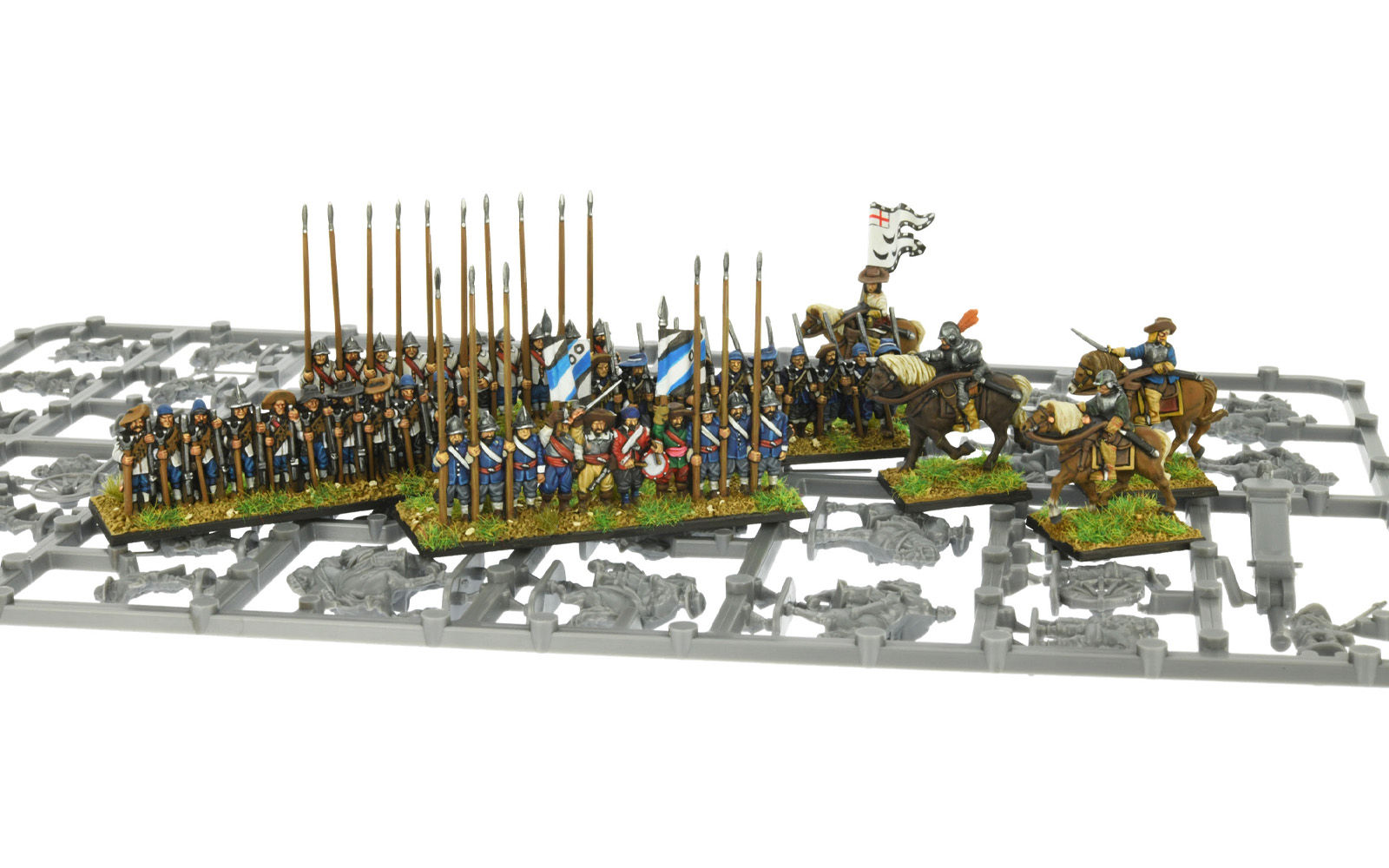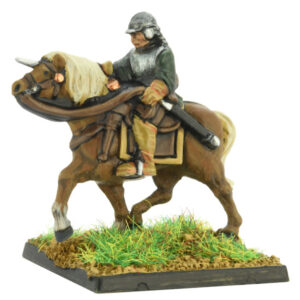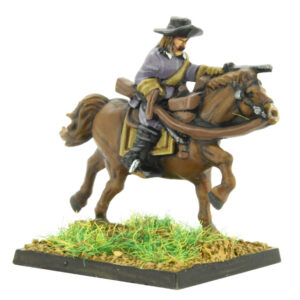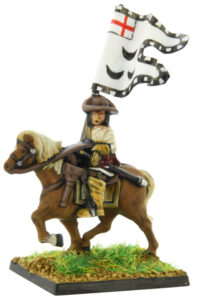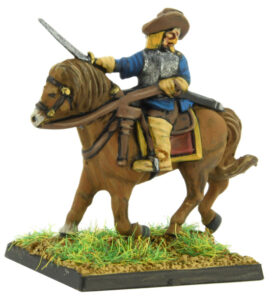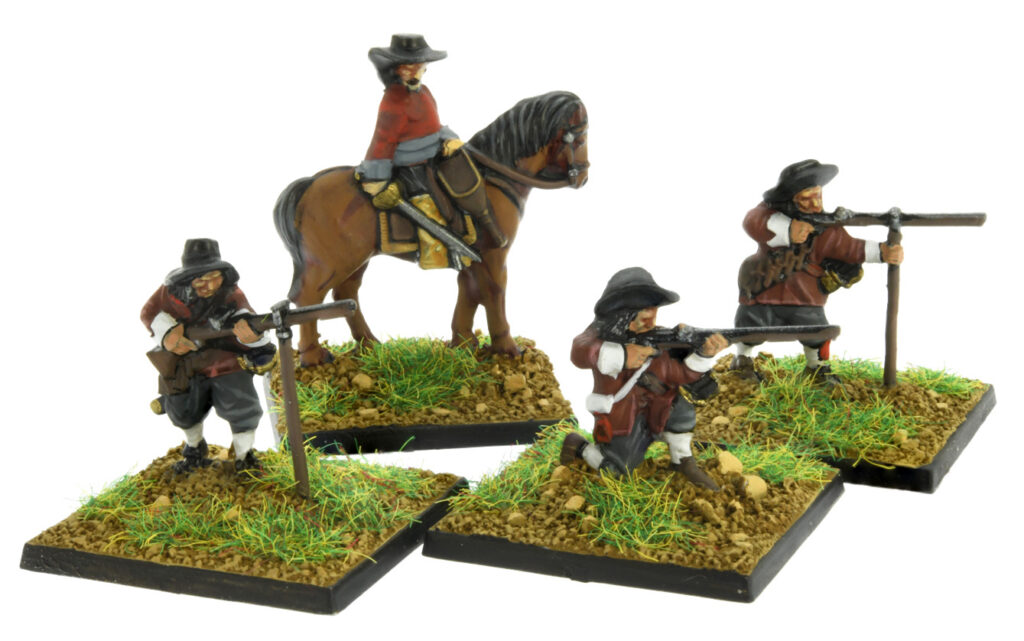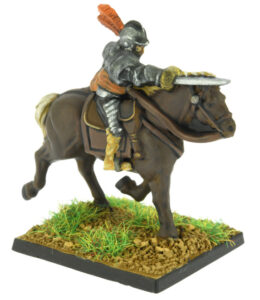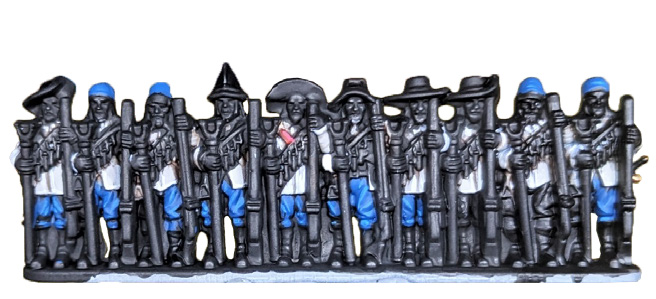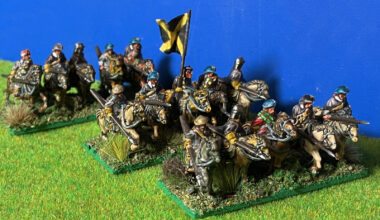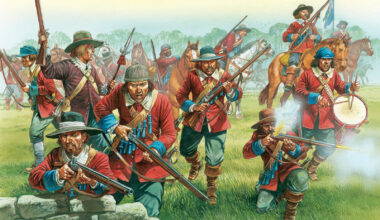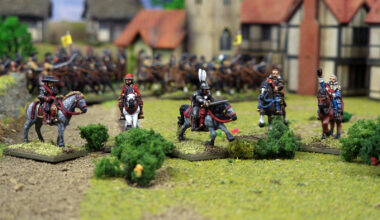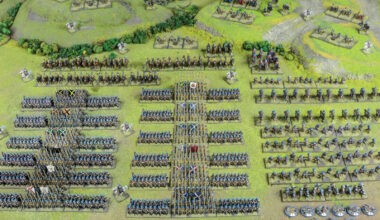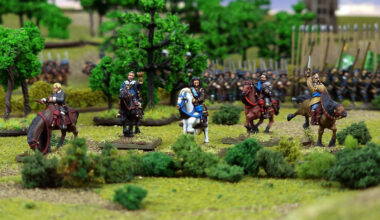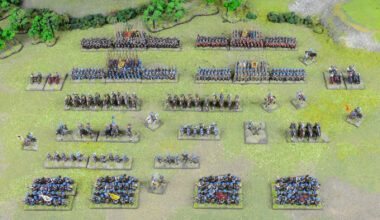Wargames Illustrated’s in-house painter, Matt Parkes, showcased his brushwork on the Pike & Shotte Epic Battles plastics for a recent issue. The article, which originally appeared in WI#424, is a fine reference for those who are just starting on their own Epic Battles journey and are looking to paint their first miniatures, or those who simply fancy trying out some alternative paint schemes for their regiments.
Cavalry
Parliamentary Cavalry Trooper
This figure features many of the buff colours typical of all Civil War soldiers – horse or foot – but taking inspiration from the watercolour Parliamentarian soldiers at a tavern, by William Barnes Wollen, this trooper wears a (probably) civilian coat, dyed green.
He also wears a more typical lobster tail helmet, employed by both sides during the war, and is depicted here with his sword drawn at the charge.
Royalist Cavalry Trooper
Any gamer who knows even a modest amount about English Civil War (ECW) cavalry will tell you the Roundheads and Cavaliers dressed pretty much identically; however, we couldn’t help the stereotype of labelling the horseman in the floppy hat as a Royalist. He is also wearing a dyed army coat.
He is armed with a drawn flintlock pistol while having a flintlock carbine slung across his leg, and a sword (with a posh bronze hilt!) sheathed at his side.
Washington’s Dragoon Standard Bearer
Matt wanted a bash at creating an Epic scale cavalry standard; so to make things difficult for him, we asked him to provide a flag for Washington’s Dragoons. This very active regiment are thought to have carried a ‘swallow-tailed’ cornet, which looks great on the tabletop and provided Matt with some challenging knife work!
Find out more about English Civil War standards here.
Småland Cavalry Trooper
With this figure, we leave the English Civil War and head back in time to the Thirty Years’ War (TYW). All the Epic Battles Cavalry figures are entirely suitable for the TYW, and Matt has depicted this model with stereotypically Scandinavian hair and beard. He has also provided him with a blue cloth jacket under his breastplate, as seen in illustrations of the Småland Cavalry in Osprey Publishing’s The Army of Gustavus Adolphus (2) – Cavalry.
New Model Army Dragoons
Dragoons provided a welcome splash of colour to the cavalry of the English Civil War, so we decided to make this mounted figure a Dragoon officer and provide him with some red-coated dismounted troopers for protection. Matt has gone for a deep/blood red for their coats and light blue trousers, as seen in the Osprey book Soldier of the English Civil War (2).
Haselrig’s Lobsters
Perhaps the most famous cavalry regiment of the English Civil War. Their distinctive lobster armour was the last hurrah for armour clad warriors on the battlefields of England. Unfortunately for them, that last hurrah led Haselrig’s Lobsters off a cliff to their doom at Roundway Down in 1643. If you would like to see more by way of reference, check out the excellent Sir Arthur Haselrig’s Regiment of Horse: The Lobsters Facebook Group.
Infantry
Prince Rupert’s Bluecoats
Warlord Games Head Honcho John Stallard suggested two interesting Regiments of Foote we might want to paint up for display, the first being Prince Rupert’s Bluecoats. The enigmatic Prince Rupert of the Rhine assumed command of Sir Thomas Lunsford’s Regiment of Foote after being impressed by their fighting ability, and they went on to feature in several key English Civil War battles from Adwalton Moor, 1643, to Marston Moor, 1644, building a fearsome reputation.
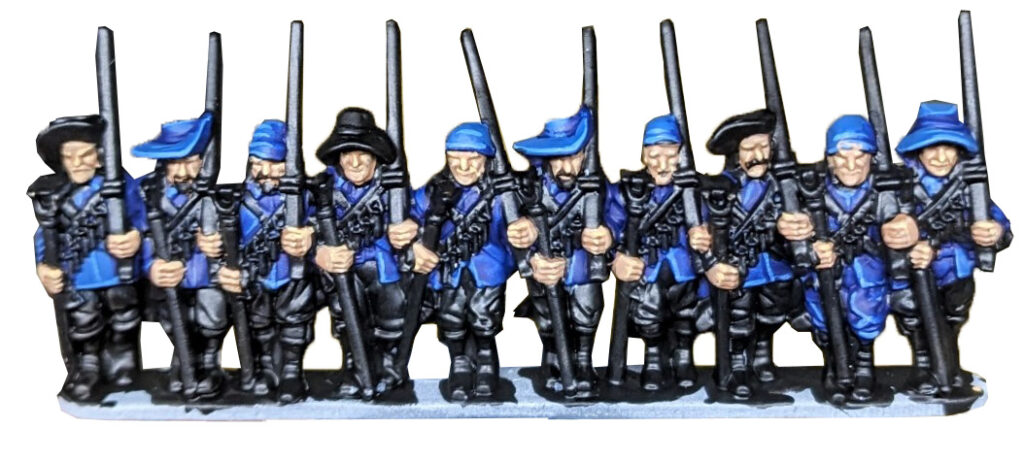
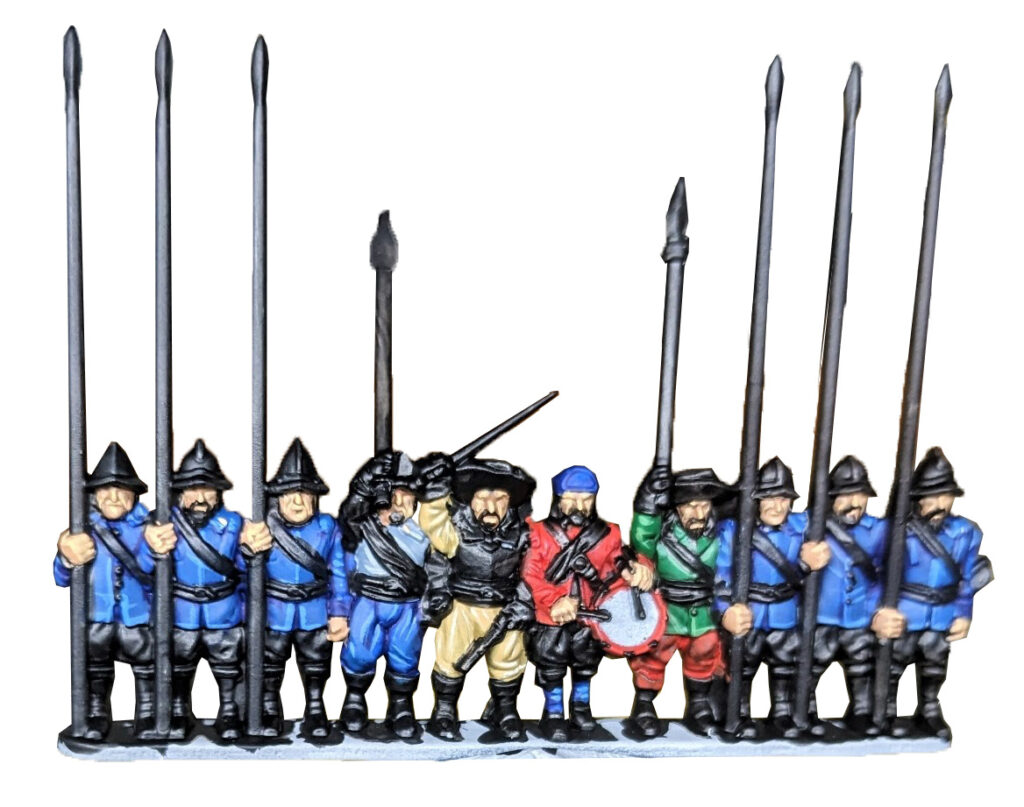
Matt has chosen to paint a command and musketeer stand for this eye-catching Royalist regiment. The same paints are, of course, applied to the elements across the unit, but it’s on the command that you can generally get a bit fancier and add some character. The command stand’s banners are a testament to Matt’s steady hand!
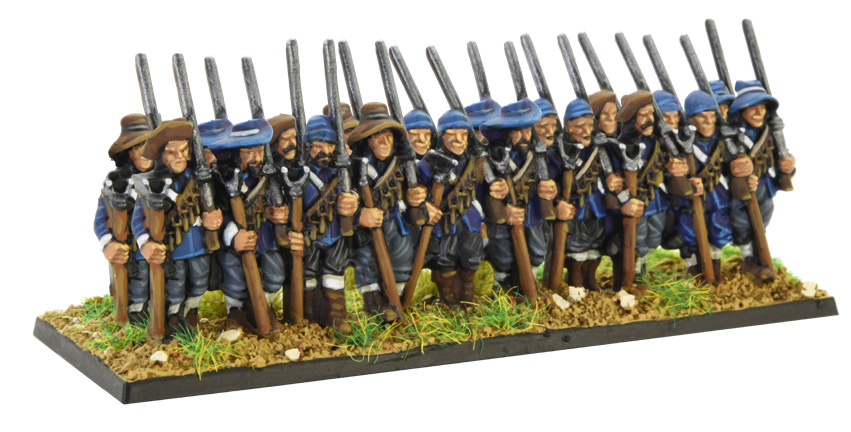
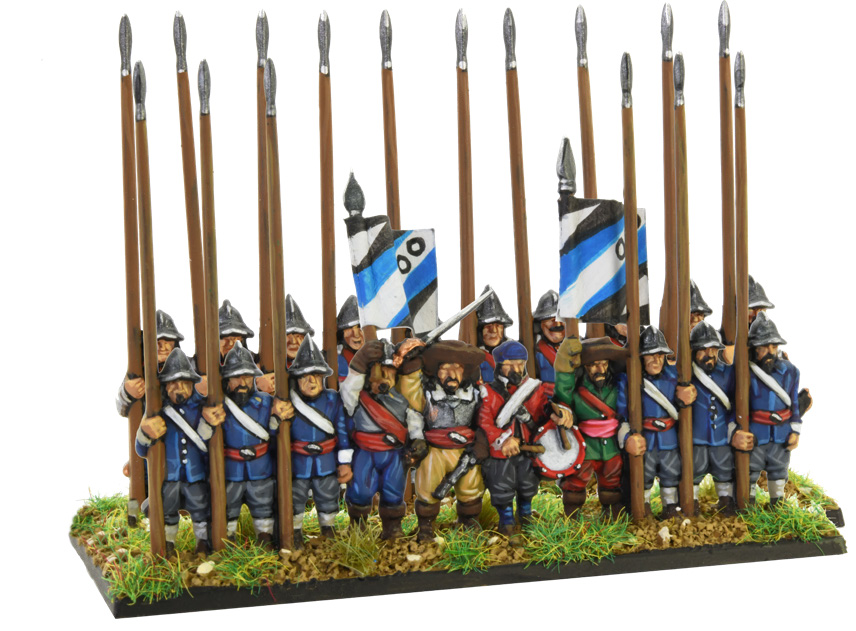
The Marquis of Newcastle’s Whitecoats
Like any pre-modern troops clad in ‘white’, debate rages over the exact whiteness of The Marquis of Newcastle’s troops’ coats, which simply means – paint them as white as you like. Matt has gone for a sheep white/grey for his stands of pikemen and musketeers, and this not only looks a little warmer than a stark white but allows him to apply subtle, purer edge highlights over the greyer basecoat. You will notice the wide range of different headgear worn by the musketeer – which helps with the multiconflict, multi-adversary nature of the models.
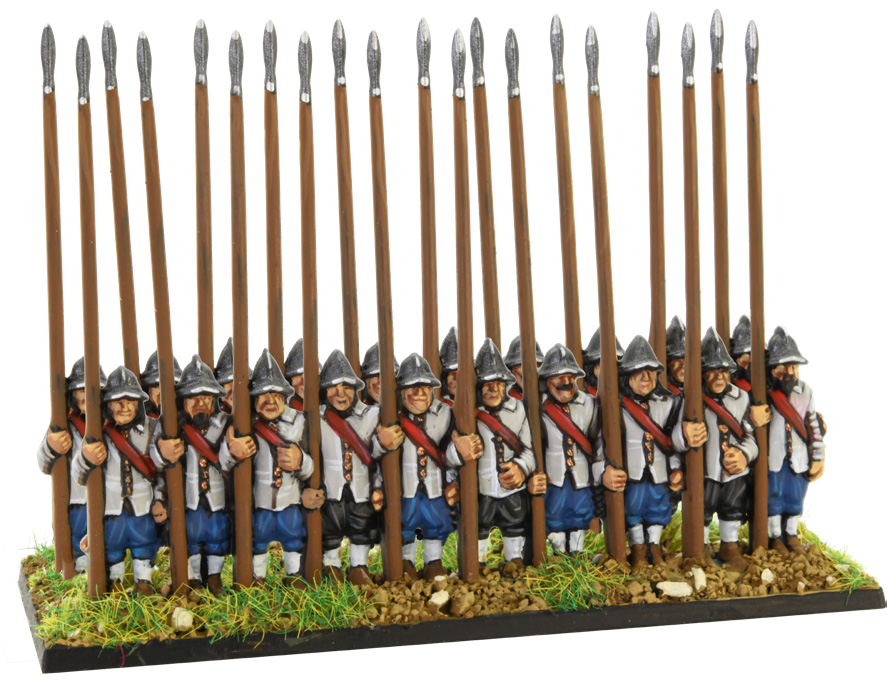
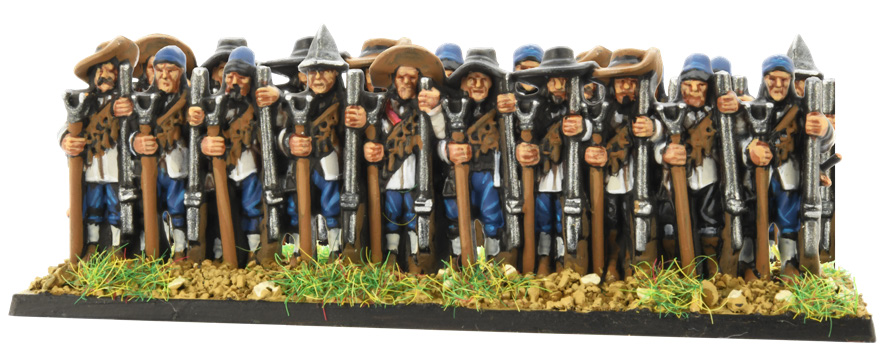
Pick Your Primer Wisely
Matt used a black primer on many of the infantry and cavalry options. This adds instant depth to recesses between the colours you apply on top and makes things really pop. On the pike unit here, however, which shows a lot of white, it was more sensible to start with a white primer before painting black around it. White would take many coats to cover a black primer – black only takes one coat to cover a white primer!
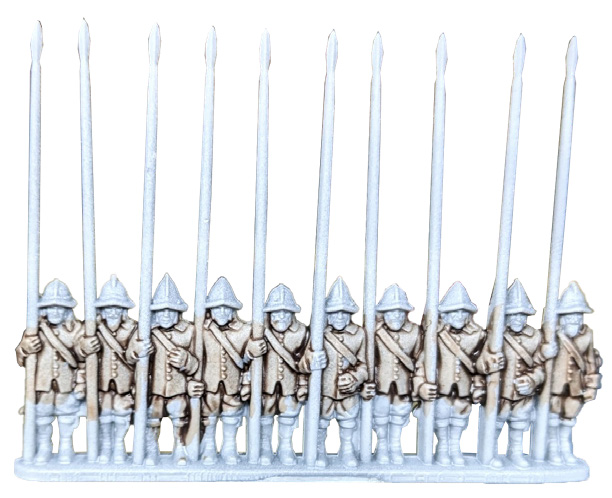
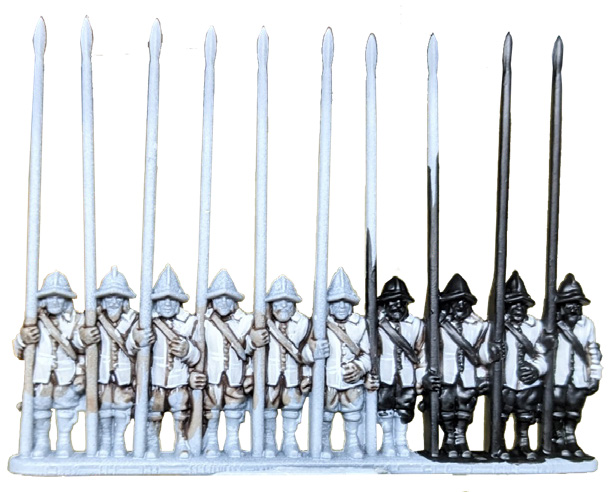
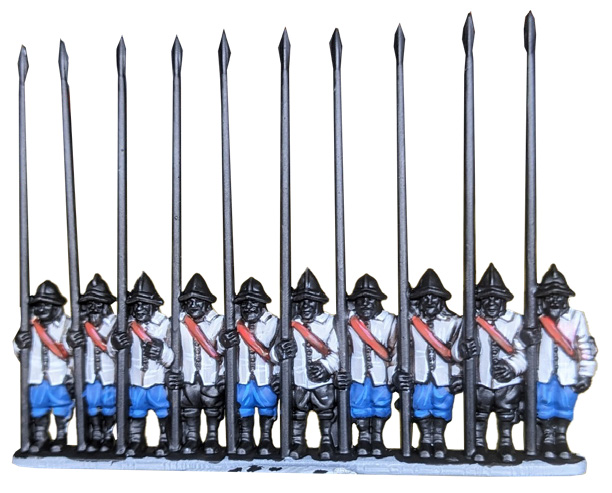
On the musketeers, however, with a lot less white showing, Matt decided it would actually be easier to apply several coats over black, as shown below.
Painting Pike & Shotte Epic Battles the Matt Parkes Way
To find out the full complement of paint colours Matt used on each of these miniatures, download the article in its original format below.
Getting Started with Pike & Shotte Epic Battles
The Push of Pike battle-set provides you with all the information you need to refight the wars that raged across Europe in the seventeenth century on an epic scale, with period-specific additions that capture the tactics, conditions, and prominent personalities of both the Thirty Years’ War and English Civil Wars. This is truly the best easiest way to get started with the game, arming you with rulebook, a veritable host of miniatures and even an MDF manor house complex scenery kit.
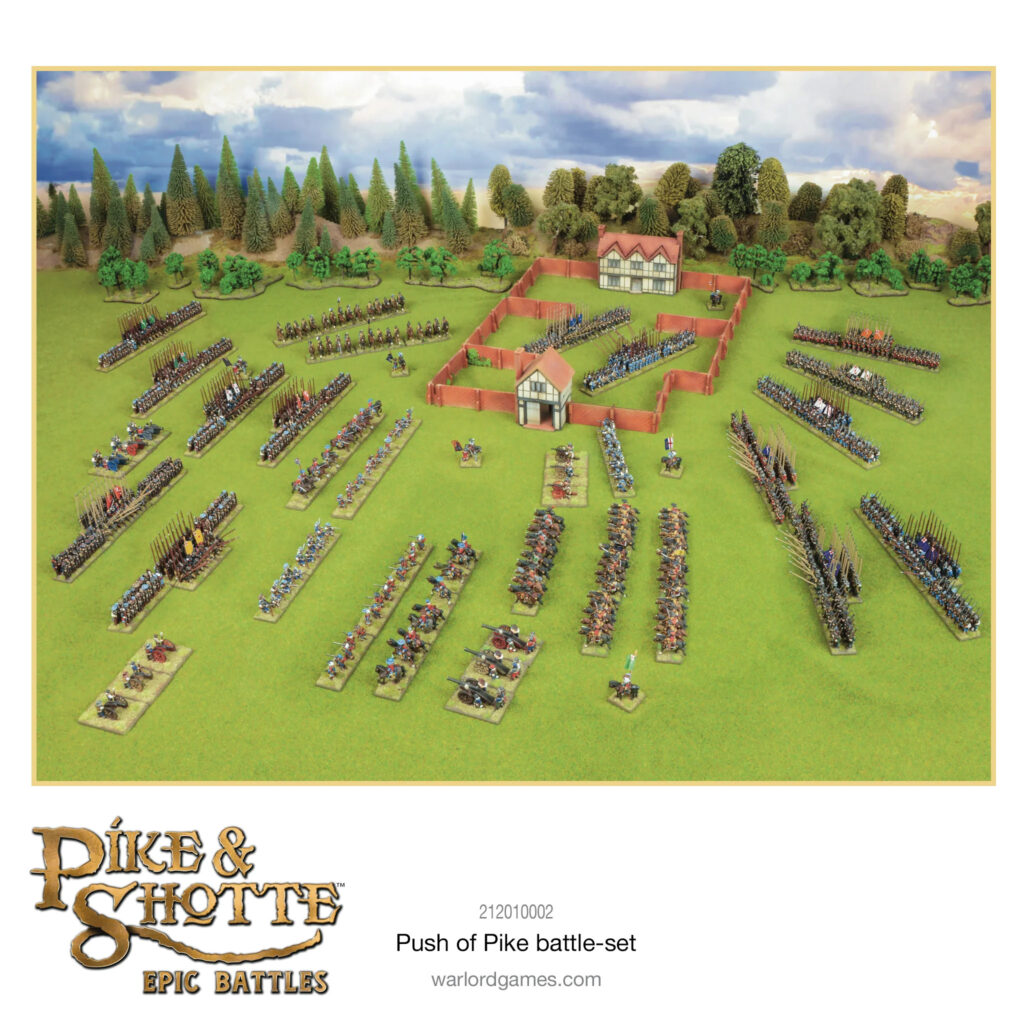
Pike & Shotte Epic Battles – Push of Pike battle set contains:
- Tan and grey hard plastic figures: 6 mounted battalia commanders, 6 ensigns, 6 mounted cornets, 14 combined pike & shot regiments (80 soldiers each), 36 commanded shotte, 60 cavalry, 12 cuirassiers, 18 mounted dragoons, 30 dismounted dragoons, 6 Saker cannon and 6 Falconet light guns
- Green plastic bases for all figures
- A5 260-page Pike & Shotte Epic Battles rulebook
- Quick Play reference card
- Assembly & painting guide leaflet
- Flag sheets for both the English Civil Wars and the Thirty Years’ War
- Laser-cut MDF fortified manor house complex
- Six D6 dice
